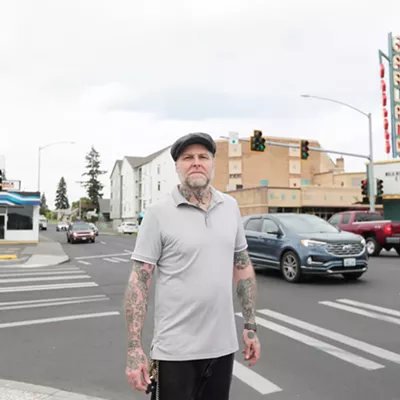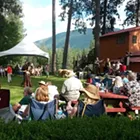Take a look around at recent headline-grabbing projects in Spokane - the Davenport Hotel, the Fox Theatre, Lewis and Clark High School - and you'll find preservation and restoration success stories. You'll also find lighting fixtures either restored or lovingly reproduced by the local lighting artisans at Luminaria. Founded in 1984 by Geoff Loftin, the company has seen its star rise along with the rising visibility of preservation in the community. Now, as Spokane is gaining recognition for its marvelous stock of old buildings -- and thanks to the Internet -- Luminaria's craftsmanship is reaching across the country.
"More of our customers are coming from outside the area now, but that's just where the growth potential is," says president Mark Mansfield. "Our growth nationally is happening the same way it happened locally, by word of mouth. Nothing beats a referral, getting that buzz among clients."
Mansfield has been president of Luminaria for five years now, but he first walked through the door as a customer. He was so impressed by the work of the artisans and the potential for expansion that he became the company's top officer. Now, with an image-intensive online catalog and that much-desired "buzz" percolating through national publications like American Bungalow, Home Magazine, and Preservation, Luminaria is collecting customers from coast to coast. A map on the wall holds push pins showing the company's geographic reach.
"Internally, this became very affirming to us," Mansfield says. "We're in the Spokane community but also in this community that's not as constrained by geography. You see pockets in the more cosmopolitan crossroads, but largely, our story is one of grassroots growth."
Mansfield says Luminaria's early success must be credited to the growth of historic preservation efforts in Spokane, led by visionaries like Ron and Julie Wells.
"You have to look at a business like this and see what makes it successful," he says. "It was the patronage of some of their original developments like the San Marco. Visionary ideas or conviction alone [are not enough.] You have to have a community of appreciation. And it's that community of interest that really lets a business like this flourish."
He's proud of the company's position within the "restoration economy," that segment of commerce devoted to the restorative development of the natural and built environments. Luminaria repairs and restores antique lighting fixtures and also creates new fixtures modeled upon classic designs. The restoration of vintage fixtures entails far more than basic lamp repair, Mansfield explains, leading the way through a basement that looks like a handyman's dream.
"We're always bringing in new parts, inventorying them, and then having the components on hand for the vintage lighting work," he says. "We feel that if you say you do authentic restoration, then you have to have a very odd inventory, which is not something you go out and buy. You have to be responsible for what becomes a large recycling act, of finding, organizing, and then using as a resource for clients' projects."
Luminaria's artisans work to understand not only what a fixture looks like and how it works, but how it was made. The company seeks to document the story and process of the craft as well as the product, Mansfield explains. "You get into the science of how they were manufacturing then, both the aesthetic and mechanical elements of the fixtures."
The vintage lighting fixtures and components that Luminaria keeps on hand are used both to repair antique fixtures and to serve as models for the creation of new fixtures with the style and character of much older pieces. This second aspect of the business allows Luminaria to work with large commercial and institutional projects that must meet up-to-date codes and safety standards. The goal is to maintain the style and aesthetic of the original fixtures while bringing the function into the 21st century.
Often, restoring existing fixtures proves to be a less expensive option than buying new ones, and it's better for the planet, Mansfield says. "When you look at the footprints of cities and the use of resources, we cannot live the next hundred years like we lived the last hundred," he says. "People are looking at the resources we have in a different way."
Working with fixtures that have functioned well for nearly a century has given Mansfield a sense of responsibility for the future.
"Architecture speaks the power of place," he says. "The culture is represented in the forms. Are we building our city with something that a hundred years from now will communicate the character of who we were? Are we proud of our actions? In our lighting, the answer is definitely yes."
Publication date: 05/29/03















